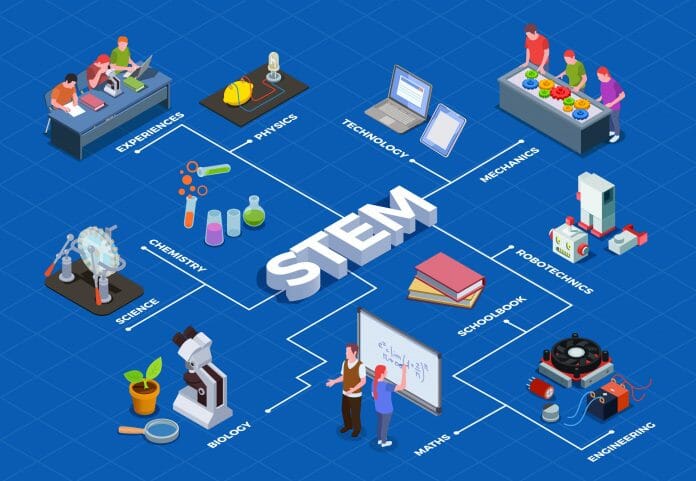By Sofea Azahar,
In the journey of embarking digitalisation due to the Covid-19 pandemic, there is an urgent need to beef up the skills of our local talents in order to reduce the risk of being displaced by automation and that is by providing them with the suitable education.
According to McKinsey & Company, approximately 50 percent of the work time in Malaysia is spent on routine activities which are likely to be automated – payroll officers, transaction processors (72 percent), legal support workers, mortgage originators (71 percent), and production workers and machine operators (71 percent).
The company also estimates that automation can displace up to 25 per cent of the hours and this is equivalent to 4.5 million workers in the country by 2030.
On the positive side, McKinsey also noted automation can create new opportunities due to factors such as rising incomes, higher spending on education, ageing population that will make way for creation of new occupations, increased spending on infrastructure, and increased investments in technology.
So, automation and jobs are not mutually exclusive.
However, this automation-driven labour demand comes together with the requirement of talents equipped with advanced skillsets in driving the innovation. Hence, the workforce needs an upgrade in order to narrow the skill gap and for them to move up the high-skill value chain.
But the important question to begin with is how skilled are Malaysian workers? The breakdown by skill levels are as follows:
- Low-skilled: 1,862,500 persons (12.4 per cent);
- Semi-skilled: 9,059,000 persons (60.1 per cent); and
- High-skilled: 4,151,900 persons (5 per cent).
So, in total, the share of low- to semi-skilled workers accounts for 72.5 per cent, higher than the share of high-skilled workers.
Let’s take a step backward and assess the education levels of Malaysians to embrace the digitalisation journey. How is it doing?
Of the total employment, workers with secondary education hold the largest share at 55.6 per cent, followed by those with tertiary education (29.4 per cent), primary (12.1 per cent) and no formal education (2.9 per cent).
Another indicator that can be looked into is the Programme for International Student Assessment (PISA) scores of 15-year-old students released by the Organisation of Economic Cooperation and Development (OECD).
For Mathematics and Science subjects, the PISA scores are below OECD average at 440 and 438 respectively. These are far behind students’ scores in the more advance economies such as Singapore, Japan, Korea, and even China.
Furthermore, the Malay Mail reported that the share of students choosing Science, Technology, Engineering and Mathematics (STEM) in schools dropped to 44 per cent in 2018 from 48 per cent in 2012.
In the higher education institutions (IPTs), the number of students who enrolled in courses related to Science, Maths, Computer, Engineering, Manufacturing and Construction in 2017 was lower compared with enrolment in art courses because they want to opt for easier subjects and they do not place high values in science subject.
Even the SMEs noted that skilled digital talent is one of the main components to drive digital transition in terms of, say, the redesigning of business processes, but sluggish digital adoption is a result of the gap in digital skills among the employees, according to SME Corp-Huawei Survey Report.
Ameen Kamal’s article on “Does Malaysia have enough talents to be a high-tech nation” gave a deeper analysis of this issue.
So, in realising the digital transformation vision or the envisioned Malaysia 5.0 – a problem-solving approach to society’s challenges and problems through the deployment and implementation of Fourth Industrial Revolution (4IR) technologies – what can be done to address the skill gap challenge?
Above all, it needs to start from the education delivered to the students at schools and universities with a strong foundation, then it will be relatively easier for the future workforce in terms of getting employed and for them to adapt in the booming sectors post Covid-19.
Therefore, the enrolment in Technical and Vocational Education and Training (TVET) programmes offered by the Education Ministry, Youth and Sports Ministry and MARA TVET institutions should be actively promoted and be placed in the mainstream education amongst the secondary-school leavers as the courses offered are very much related to technology.
To encourage participation, a change in mindset needs to be undertaken extensively by changing the social perceptions toward TVET as a less prestigious choice of study to one that sees it as a valuable platform to generate a high-skilled labour force for the nation.
A good yardstick to measure whether these efforts at changing mindset is successful is when employers are happy with the good performance of these high-skilled TVET graduates that they will happily retain them by giving these graduates a good pay rise, which in turn will help raise the starting salary of TVET fresh graduates in the future.
Alongside TVET, a similar approach of mindset change needs to be pursued for the Science, Technology, Engineering and Mathematics (STEM) learning, in line with the objectives of the Education Blueprint (2013-2025) in order to tackle lack of students’ preferences for these subjects.
As advocated by Bill Gates, “Teachers need to integrate technology seamlessly into the curriculum instead of viewing it as an add-on, an afterthought, or an event.”
So, these are the education-oriented measures which are the key drivers in producing high-skilled talents and one of the major walls that we have to break through to get to the vision of Malaysia 5.0, while realising one of the targets of the Shared Prosperity Vision 2030 (SPV2030) – 35 per cent of high-skilled workers.
Sofea Azahar is Research Analyst at EMIR Research, a think tank focused on strategic policy recommendations based on rigorous research.









